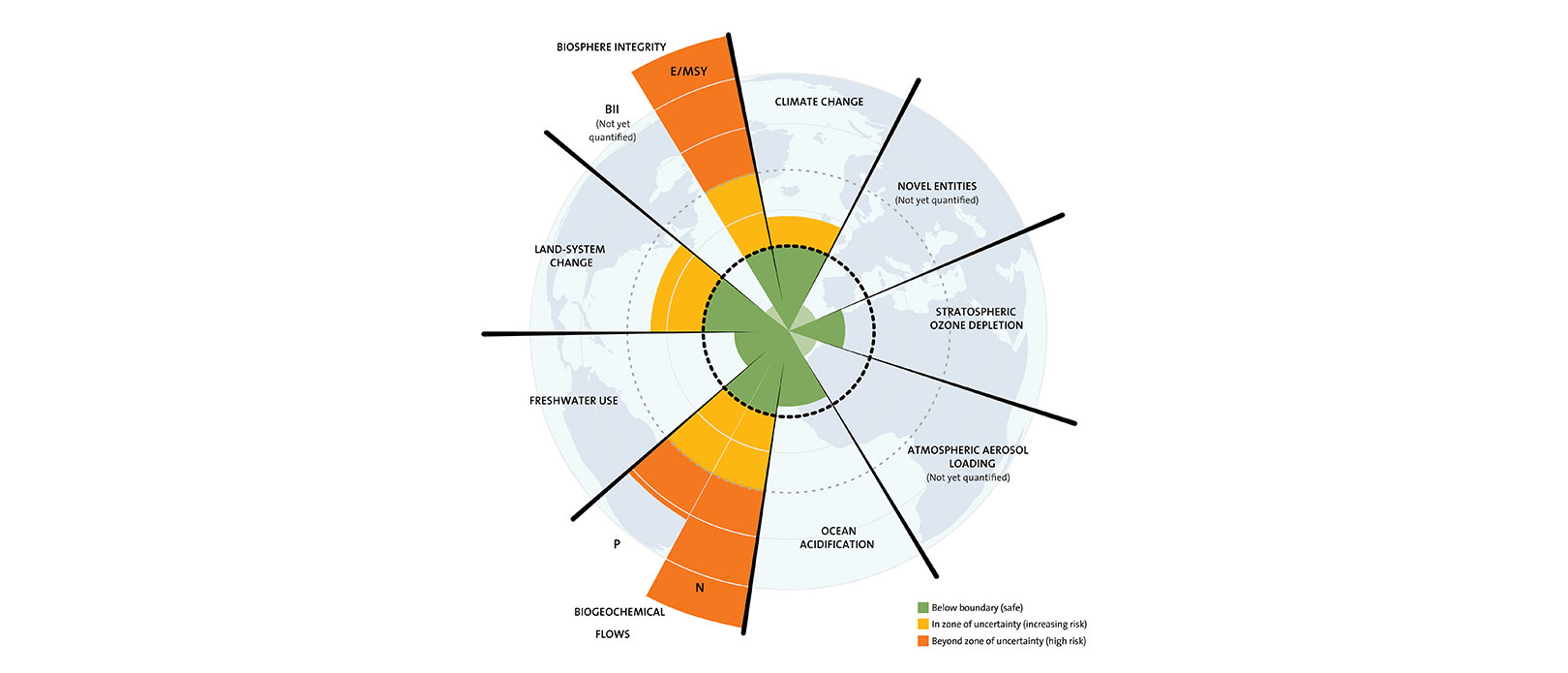Unlimited growth is not only built on approximations, uncertainties, and imperfections, it starts with a wrong assumption.
There is no need any more to explain nor demonstrate the limitation of the planet we are living on. For some years now, observations from the space confirmed the assumptions, and demonstration made by scientists centuries ago: the Earth is finite.
If we, logically and consciously consider the limits, the boundaries of the system we are living in, how can we accept or take for granted the assumption of the infinite growth?
« A healthy economy should be designed to thrive not to grow »
Kate Raworth [i]
Gathering and compiling numerous economic studies and publication, the economist Kate Raworth made accessible to everyone, the concept of the “Doughnut Economy.”

The Doughnut Economy is based on the principle that economy should evolve between two boundaries:
- The inner limits (called social foundations) based on 12 components of the social well-being (energy, water, food health, education, income & work, peace & justice, political voice, social equity, gender equality, housing, networks, energy). Each of the components being measured and a target defined to reach a social well-being.
- The outer limits (the ecological ceiling): Our planet is a finite system space. Its system consists of 9 main boundaries (Rockström et al.)[ii] not to overreach, to avoid destabilization of its fragile equilibrium: climate change, ocean acidification, chemical pollution (novel entities), nitrogen and phosphorus loading, freshwater withdrawals, land conversion, biodiversity loss, air pollution, ozone layer depletion.
A healthy economy must then have for mission to fulfill those “basic needs” while respecting our planet boundaries…
When looking into the mirror of the recent human history, looking at the current situation, and the prospective at short, medium, and long term, it is commonly admitted (and recently agreed by the global community during the COP26 in Glasgow) that the world economy is not healthy.
How can we build a healthy economy, an economy able to deliver to all human being living on the planet and the ones to come an equal access to their basic needs, to achieve the Social Foundation, everyone deserved?
How can we reduce the inequalities in the access to social well-being while not arming the only livable known and accessible planet we have so far?
Our economy requires to initiate a long Homerian odyssey towards a sustainable and fair model. This journey will go through different concepts called Sustainable Development and Social Innovation…
[ii] Rockström et al. (2013). A safe operating space for humanity. Nature, v.461, 472-475 (2009). 46.




 powered by renewable energies |
powered by renewable energies |